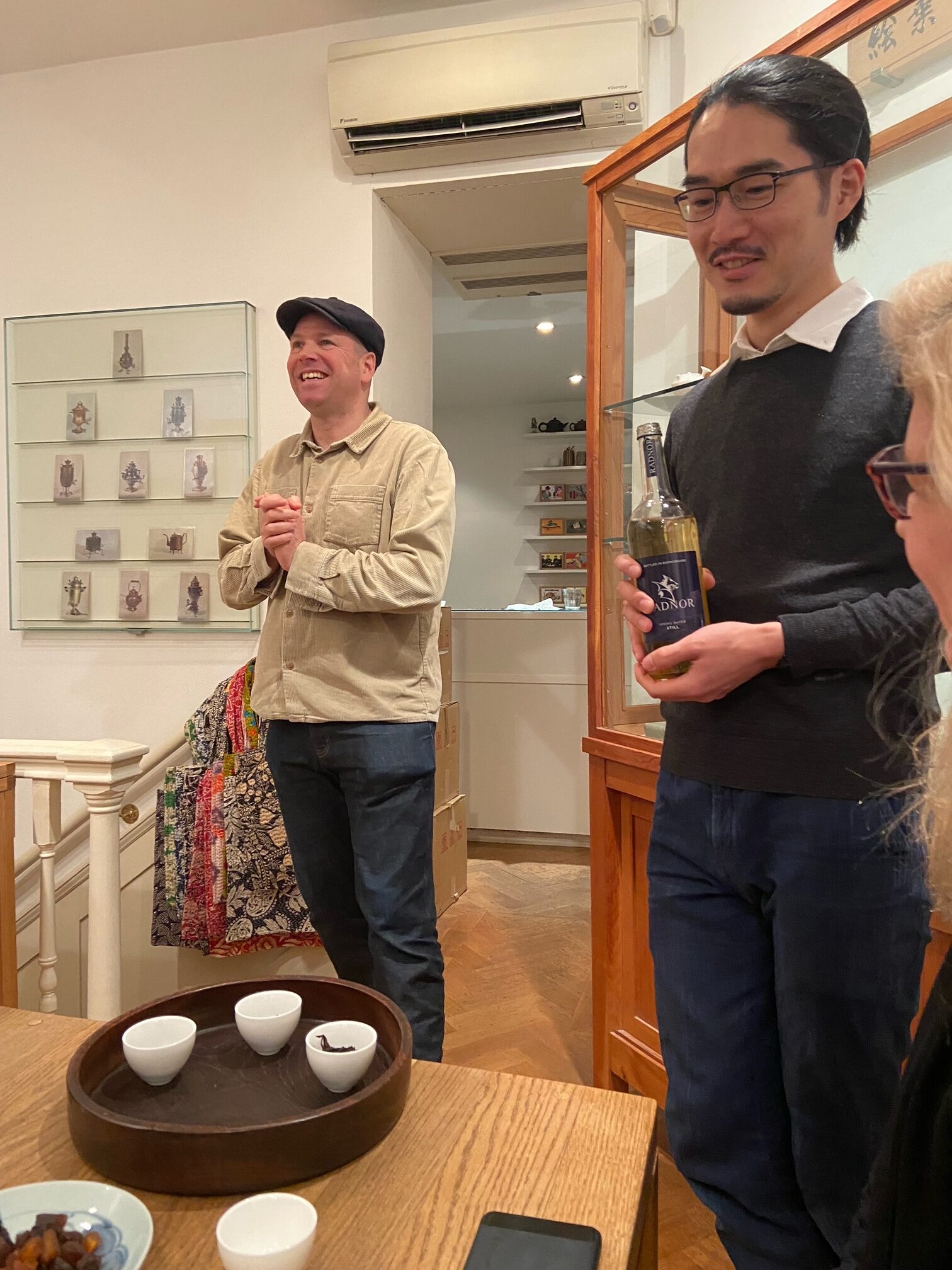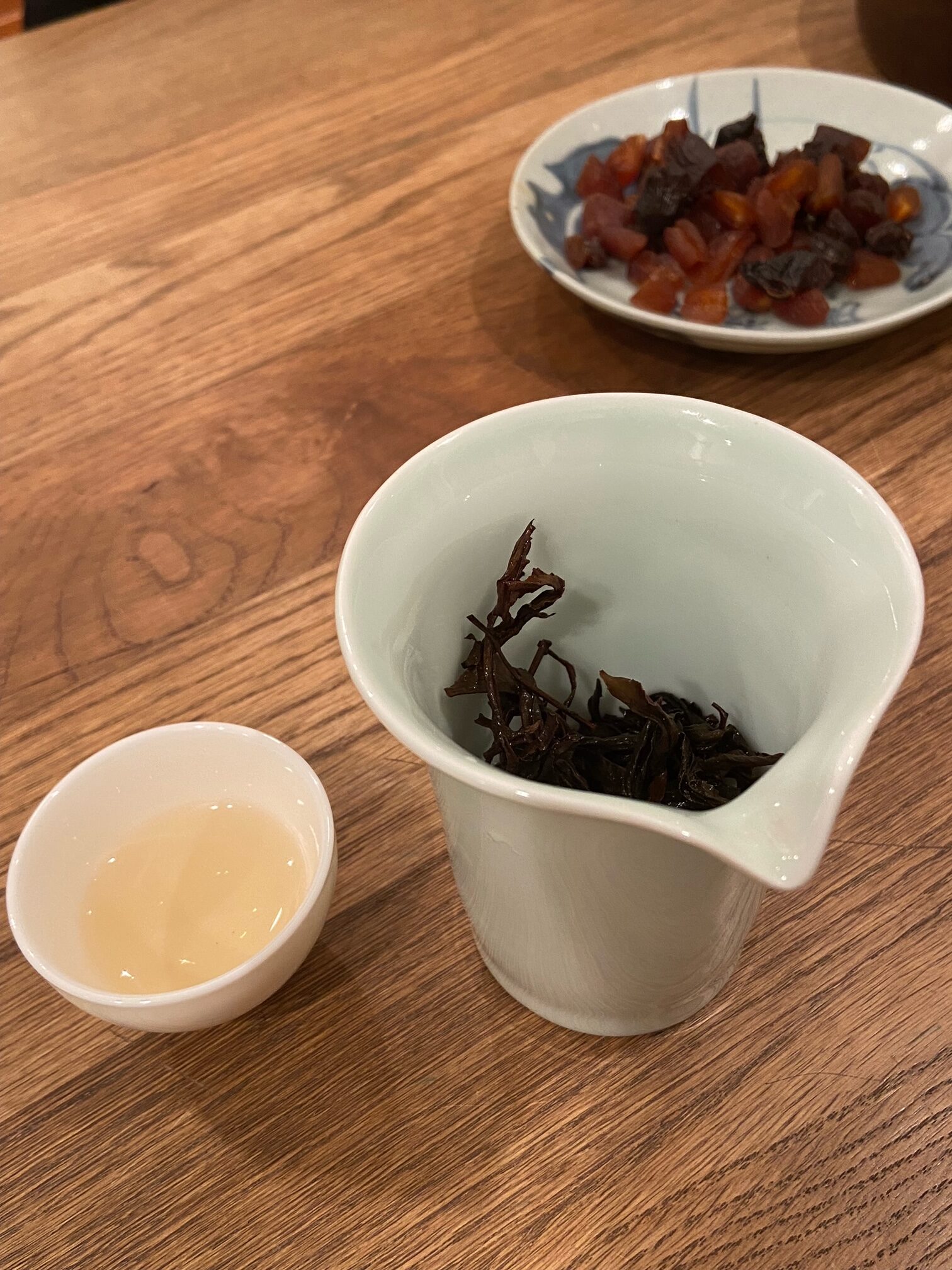Postcard Teas, London’s legendary purveyor of quality loose leaf teas, hosted a fabulous tasting on Jan 9th featuring the teas of Issin En tea farm in Miyazaki prefecture. Despite short notice for the event and advertising only on instagram, Postcard’s shop was packed to the rafters with tea enthusiasts – almost 30 in total, impressive indeed for a gloomy Tuesday night in January.

Issin En is a pioneer of organic tea farming in Miyazaki and has been producing high quality tea with a focus on the prefecture’s famous kamairicha for over 30 years. As GJTea students will know, there are many challenges facing the Japanese tea market currently including the falling population in Japan (resulting in less people to both grow and drink tea), waning interest in loose leaf green tea in general, and a shift to much cheaper bottled green tea. As a result of these influences, it is harder and harder to make a living growing traditional tea styles. Issin En diversified into oolong and black tea (wakocha) 10 years ago, which have been very well received and are helping to attract new customers – last year’s oolong harvest haw already sold out. They already had all of the roasting equipment needed for preparing oolong and black teas thanks to their history of making pan-fired green tea, so this diversification didn’t require a big initial investment, and these newer styles can command higher prices than kamairicha. Yokoyama-san explained that low prices are a particular problem for Miyazaki tea farmers, as this region lacks the historic fame that would allow them to command Kyoto or Shizuoka prices for their green tea. The farm is located at an elevation of 200-400 metres, which is on the lower side compared to other farms in their area. Yokoyama- san told us this poses some challenges for them when growing Taiwanese oolong cultivars that prefer higher elevation sites and can contribute to lower yields (they only process a maximum of 10kg of oolong per day during the growing season), but nonetheless the quality has been impressive.



